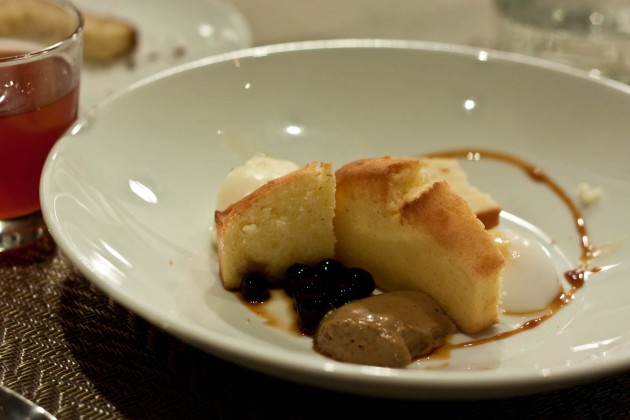
Photos: Johanna Bobrow, Courtesy of Journeyman
What do dessert-making and bingo have in common? A great deal, according to co-owner and chef Tse Wei Lim of Journeyman in Somerville.
___
Tse Wei Lim
Chef, Journeyman
PRK Guest Contributor
For this month’s post, Jessica and Sue asked a question we get on a regular basis – how does a restaurant without a pastry chef come up with desserts?
The unglamorous answer is: the same way we come up with all our other food. Creating dishes is a craft, much as cooking itself is a craft, and the work is the same whether the food is savory or sweet. Numerous cooks of considerable distinction have tried to describe this process before – and all the descriptions boil down to much the same thing – having a mental toolkit of ways to elaborate on germinal ideas and turn them into complete dishes. Dishes do sometimes pop into your head, but more often it’s a process of just trying one question after another till something finally clicks, like trying to find the right ratchet for an old bolt.
This, I suppose, is what people would call a philosophy – the set of questions you ask, and where those nubs of an idea come from. Some of the dishes at Alinea, for instance, started from ideas like “a dish that’s plated in front of the diner” or “a dish that’s eaten without hands.”
Dishes at Journeyman always start with raw materials – perhaps we have rhubarb this week, or nettles, or veal, or perhaps we’re forced to look in unusual places for inspirational ingredients, as we often had to this winter. This search itself is often a source of inspiration – this winter it led us to some superb molasses, and really phenomenal hazelnut paste – things we probably would not have found if we had peaches all year round.
Given an ingredient, the first thing we ask ourselves is what to do with it. There’s often more than one answer – our last dessert involved rhubarb jam, macerated rhubarb, rhubarb syrup, and rhubarb sorbet, because the qualities of rhubarb we wanted to capture, the beautiful astringency and the brilliant pink color, could be expressed in many, subtly different forms. With apples last fall, though, we found ourselves gravitating to a single preparation for each variety of apple that came through the kitchen – sorbet for Orange Pippins, to bring each nuance of flavor into play, stewing in caramel for Dolgo Crabs, for color and to harmonize with the tannins in the skins.

Orange pippin sorbet and caramel crab apples
These expressions of the core ingredient provide foundations around which we build the rest of the dish. In seeking to complement them, we look first for flavors, then for textures, and finally for visual interest on the plate. Frequently, this results in a kind of “dessert bingo”, where we’ll find ourselves saying “OK, we have a frozen element, a creamy element, and a crunchy thing, so we could put a soft, cakey element on or a crispy thing, but we can’t put another frozen thing on.” It becomes almost a matter of deciding what textures to assign to each flavor we want on a plate, or vice versa – given that we need a variety of textures on a plate, what flavors we want each one to convey.
Ultimately, what we’re looking for on every single plate is balance and interest – both of which reinforce the tendency to play bingo, as it were, since both are achieved by having variety on the plate. The trick is in delivering this variety while maintaining an economy of expression, so that the beauty of the original ingredient is not lost in a forest of other components.
